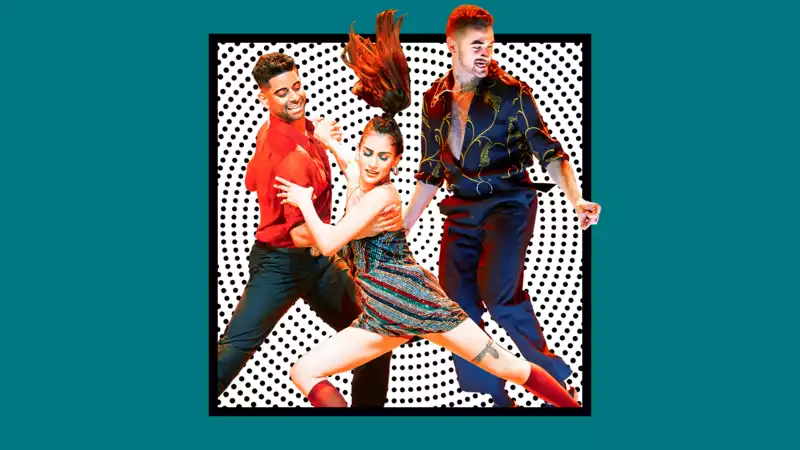
Costume designer Anne Dewis talks about the contemporary look of "West Side Story".
[jeans (opens in new tab), hoodie, sneakers (opens in new tab), jacket.Gone are the full skirts that fans associate with the original productions. Instead, sports bras, tank tops, and track pants replace brown-length wig dresses.
Reminiscent of the Balenciaga runway (open in new tab) and with a fast-fashion-like price tag, the sartorial effect is thanks to the show's costume designer, Ann Duis, who wanted to ensure that the Broadway setting reflected the real world.
"It's what young people are wearing now. We didn't want to make it too fashionable," Duis tells Marie Claire.
"It's a story about kids who can't afford designer clothes.
In case you haven't figured it out yet, this revival is not a show for purists. With his edgy style, Belgian director Ivo van Hove has reimagined this beloved classic in a modern way. The show is no longer set in the racist 1950s, but in the racist (opens in new tab) present (opens in new tab). And for the first time, the original choreography by Jerome Robbins is not used. Instead, the audience will see powerful choreography by Anne Teresa de Keesmarker. Like the costumes, the movements are less balletic and more rebellious, a welcome change that echoes the changing times. [D'Huys, who studied fashion at the Royal Academy of Fine Arts in Antwerp, was a member of Anne Demeulemeester's design team for more than 12 years. However, the clothes D'Huys designed for "Story" were not as high-fashion as one would expect from someone from Demeulemeester. The cast of the play resembles the local youths one encounters on a New York City subway platform. Duis also focused on giving each cast member a "unique look," and made their differences a "gift." (instead of giving each gang a recognizable blanket uniform, for example).
Those differences are emphasized on the largest possible scale for the audience. During the production, the cast's faces are projected on a screen that fills the entire stage, allowing the audience to observe their piercings and tattoos, designed by Andrew Sotomayor, up close. The camerawork designed by scenic and lighting designer Jan Wersweifeld and the giant high-definition video screen create an interesting dilemma not usually encountered by Broadway costume designers: from the mezzanine floor of the theater, as visually as on the silver screen. How do you design a garment that has the same impact?
"The details of my costumes are more pronounced than in a typical dance or theater production," Duis explained, using personal touches such as jewelry and small prints that most Broadway productions would not bother with because they are not visible to an audience in the second row or above. He pointed out that the productions were not as detailed as the first. But Dewis's attention to detail comes alive on the screen, and the show cohabitates Broadway productions and studio films.
Speaking of movies, Duyce's use of color - cool blue for the jets, warm red for the sharks - is the only notable reference to the 1961 film, which she credits as a major influence on her as a teenager. But she was determined to make the rest of the film "very modern." And she succeeded.
"I think the time is right," Dewis said of the revival, adding that nothing has changed for low-income children of color in the 63 years since the show premiered on Broadway. I hope that the young people who come to see this show will feel that they have the power to make that change." "
To read more stories like this, including celebrity news, beauty and fashion advice, savvy political commentary, and fascinating features, sign up for the Marie Claire newsletter.
Click here to sign up (opens in new tab)
.
Comments